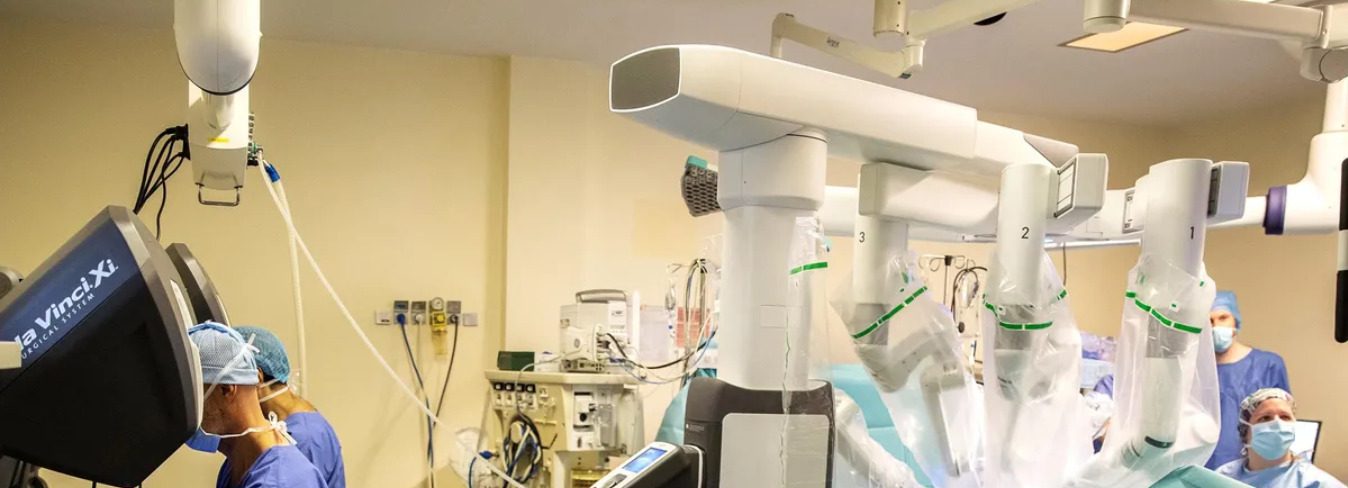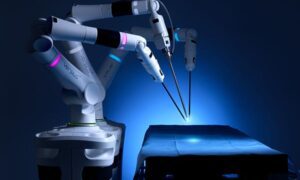Robotics surgery or surgical robots is among the most cutting-edge technology used in the healthcare sector. The most broadly used surgical robotics involves surgical tools such as robotics arms and high-definition (HD) cameras.
However, the common challenge faced in utilizing surgical robotics is the requirement of expert surgeons to know about controlling the robotics arms installed in the healthcare operating room.
There are situations when the surgeons need extra help during the treatment and surgeries, especially for those surgeries requiring more precise actions. That’s where the role of robotic surgery comes into action. The surgical robotics installed in the healthcare operating room allows doctors and surgeons to carry out complicated medical treatments in a controlled and more accurate manner.
Surgical Robotics – Modern Way of Reducing Surgical Error
Robotic surgery has been in practice since the 1970s. The National Aeronautics and Space Administration (NASA) was the first ever company to sponsor a robotic surgery project for soldiers and astronauts who were not able to have access to human surgeons.
Surgical robotics refers to an advanced technique of laparoscopic or minimally invasive surgery where surgeons use computer-controlled robots to help them in different surgical procedures.
There are different advanced technologies connected to surgical robotics, such as cameras and robotic arm control by surgeons.
The robotic hand has a higher degree of agility that allows surgeons to perform surgery even in complicated areas of the human body. Operating in a complicated human body such as the stomach would have never been accessible without the use of surgical robotics. Though conventional surgical procedures were being used for various surgeries, the chances of infection were always high.
Many people think that robotic surgery is completely performed by robots and thus view surgical robots as risky procedures compared to open surgery procedures. However, the fact is a bit different. Robots are not assigned to perform the entire surgery on their own; rather, robots act as tools controlled by surgeons for treating complicated human body parts.
The demand for surgical robots in the healthcare sector is constantly increasing primarily due to their promising abilities to assist surgeons in performing surgery in the deep and complicated areas of the human body.
According to the BIS Research report, the global surgical robotics market is expected to touch a market value of $16.77 billion by 2031 from $5.46 billion in 2020. The market is expected to grow with a CAGR of 10.2% during the forecast period 2021-2031.
How Does Surgical Robotics Work?
When using surgical robotics for surgery purposes, the surgeons make a small incision in the patient’s body by inserting small instruments such as pipes and cameras and perform the complete surgery with the help of a robotic arm connected to computers.
To make the surgical robots understand the requirements during the surgery, the surgeons used master command systems that translate the surgeon’s movements into specific movements within the patient’s body.
Robots are not assigned to make decisions while performing the surgeries alone. The surgeon provides the required instructions. The robotic arm attached to surgical robots acts as a higher precision hand compared to the human hand, which allows surgeons to operate with better accuracy and minimally invasive methods.
The surgeons have the controllers in hand to command the surgical robot’s movements, and accordingly, it works and performs the surgery. Surgical robotics can perform various surgeries, such as colorectal surgery, general surgery, gynecological surgery, thoracic surgery, and urology.
Here’s a detailed analyst note on surgical microscopes to explain the process as an example.
Benefits of Surgical Robotics in the Healthcare Sector
Compared to traditional or open surgery, surgeries performed using surgical robotics are more precise and offer doctors better control. Robotic arms can rotate 360 degrees and reach the most complicated areas of the human body.
Before the adoption of surgical robotics, several healthcare operations were challenging or even not possible. Following are the promising advantages of using surgical robotics over conventional or open surgery producers.
- Less bleeding and pain
- Fewer after-surgery problems such as chances of infection
- Shorter hospital stays, approximately 1-3 days depending on the type of surgery
- Faster healing process (recovery within six weeks)
- Surgeons have a better range of flexibility and motion during surgery
- Surgeons can see high-magnification, high-resolution pictures of the surgical area in the human body
- Surgeons have more satisfactory access to the surgical areas
Conclusion
The healthcare sector is going through a massive evolution. Over the years, the adoption of surgical robotics in the healthcare operating room has increased and become much more comfortable for the use of doctors.
Moreover, the technology powering these surgical systems is constantly getting improved. In the coming years, the adoption of robotics surgery will likely be more compared to open or traditional surgery procedures due to its promising benefits, such as minimally invasive procedures.

































